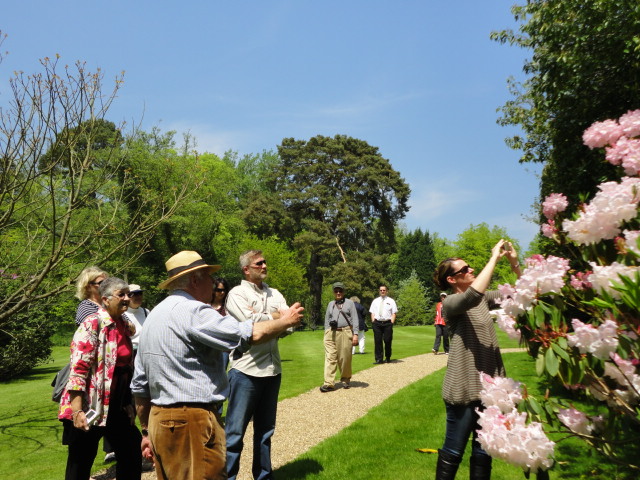Drummond Castle Gardens
The formal gardens were first laid out here in the early 17th century on a flat area just below the castle. The design was then altered as a result of the influence from the romantic English Landscape Movement at the end of the 18th century. They were then re-designed and terraced from 1818, reverting to a revival of the traditional formal garden style with help from the English landscape gardener Lewis Kennedy. He had worked at Malmaison in France for The Empress Josephine in 1812 and thus knew about French formal gardening. The gardens were laid out like a flag, with St Andrew’s cross and an obelisk multiplex sundial at the centre. The sundial had been erected in 1630 as part of the original garden and was made by John Mylne III, Master Mason to Charles I.
These gardens now display a revival of the formal 17th century style, similar to those recently restored at Hampton Court in Surrey and Het Loo in Holland. The terracing and statues show Italian influence. The parterres and the north-south axis of the garden, which cuts through the woodland opposite the castle, suggest a formal French influence. Unusually small ornamental trees stand within the parterres, with upright yews and hollies.
The impressive gardens seen today were re-planted during the 1950s, preserving the 1818 layout and features such as the ancient yew hedges and the copper beech trees planted in 1842 to commemorate Queen Victoria’s visit. The planting was simplified and opened up but the layout still contains mosaics and box parterres forming heraldic compositions. There is an interesting range of mature ornamental trees.
The dramatic sight, as the garden comes into sight from the top of the terracing, is memorable.

 Passionate about beautiful gardens? Experience the finest gardens on one of our small and friendly group tours.
Passionate about beautiful gardens? Experience the finest gardens on one of our small and friendly group tours.
 Ready to book?
Ready to book? 
